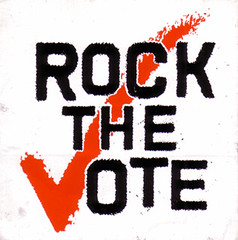
Making Voting Easy and Secure: How We Can Do Both
Voting is one of the most important things we can do in a democracy. But it’s not always easy. Some people face long lines, confusing rules, or trouble getting registered. At the same time, others worry about fraud and want stronger protections.
Here’s the good news: we don’t have to pick just one. We can make voting easier and keep it safe.
Let’s take a look at how we can do both—step by step.
1. Voter ID: Keep It Fair
Yes, we should check that each voter is who they say they are. But we need to be careful not to make it too hard for people to vote.
✅ Accept more types of ID, like a driver’s license or student ID
✅ Offer free voter ID cards
❌ Don’t block people from voting just because they don’t have one specific form of ID
We can protect elections without turning people away and feel better.
2. Vote by Mail: Safe and Simple
Voting by mail helps seniors, people with disabilities, and those who live far from polling places. It’s convenient—but it can never be secure.
Here’s how:
- Add barcodes to track each ballot
- Check voter signatures
- Use secure drop boxes for returns
Many states already do this successfully. It’s a great way to boost turnout.
3. Early Voting: More Time, Less Stress
Not everyone can vote on a Tuesday. Early voting gives people more chances to cast their ballot.
With more days to vote:
- Lines are shorter good psychology
- Workers aren’t overwhelmed
- Voters feel less rushed
Plus, it’s done in secure locations—just like Election Day.
4. Electronic Voting: With Paper Backups
Technology makes voting faster, but it must be safe.
Good machines should:
- Print a paper record of each vote
- Be tested by experts
- Be protected from hacking
Paper trails help us check results and make sure every vote is counted correctly.
5. Voter Registration: Make It Easy, Keep It Safe
Before you can vote, you need to register. That part should be easy too.
Great options include:
- Online registration
- Automatic registration when you get a driver’s license
- Same-day registration at the polls
- Depression anxiety low self esteem
At the same time, election offices can double-check names to catch any mistakes or fraud.
6. Train Poll Workers Well
Poll workers help people vote and keep things running smoothly. With better training, they’ll know how to:
- Follow the rules
- Spot problems
- Help voters without confusion
Good training means better elections—for everyone.
7. Check the Results After the Election
Even after voting ends, the job isn’t done. Audits are like a double-check to make sure everything went right.
With post-election audits:
- We find any mistakes
- We make sure results are correct
- We give voters confidence in the system
If there’s a problem, we’ll know—and fix it.
8. Take Fraud Seriously
Voter fraud is very rare in the U.S., but we still need to be careful. If someone does try to cheat, law enforcement should step in.
- Investigate real fraud
- Punish those who break the rules
- Let the public know fraud won’t be ignored
This helps protect honest voters and fair elections.
What We’ve Learned
We don’t need to choose between making voting easy or making it secure. We can have both.
That means:
- More access for voters
- Stronger protections against fraud
- Clear rules and better tools for everyone
When we make voting easier and safer at the same time, everyone wins. 🗳️✨
Voting is one of the most important things we can do in a democracy. But it’s not always easy. Some people face long lines, confusing rules, or trouble getting registered. At the same time, others worry about fraud and want stronger protections. Here’s the good news: we don’t have to pick just one. We can…
Voting is one of the most important things we can do in a democracy. But it’s not always easy. Some people face long lines, confusing rules, or trouble getting registered. At the same time, others worry about fraud and want stronger protections. Here’s the good news: we don’t have to pick just one. We can…